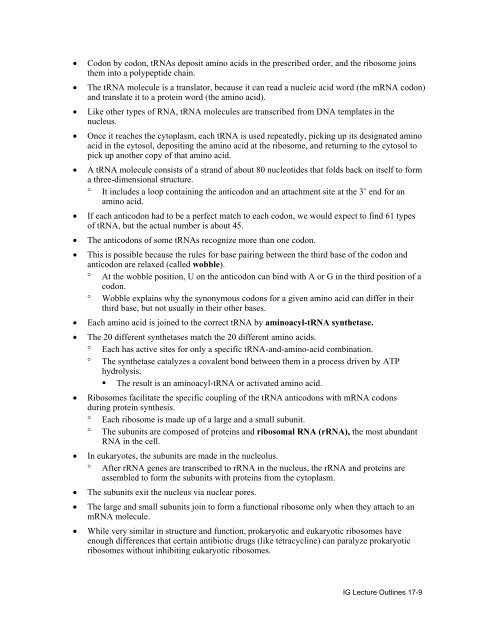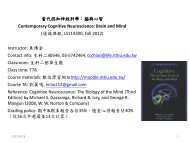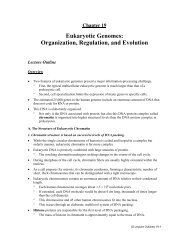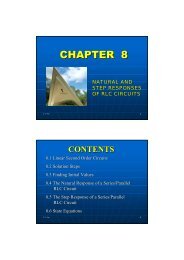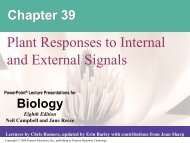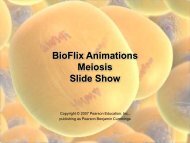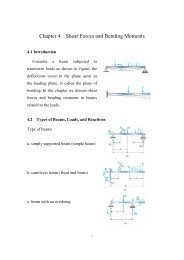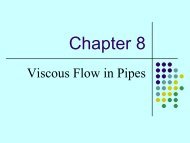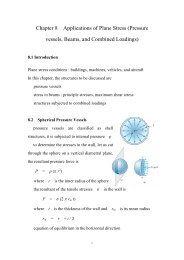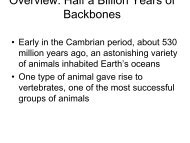CHAPTER 17 FROM GENE TO PROTEIN
CHAPTER 17 FROM GENE TO PROTEIN
CHAPTER 17 FROM GENE TO PROTEIN
- No tags were found...
Create successful ePaper yourself
Turn your PDF publications into a flip-book with our unique Google optimized e-Paper software.
• Codon by codon, tRNAs deposit amino acids in the prescribed order, and the ribosome joinsthem into a polypeptide chain.• The tRNA molecule is a translator, because it can read a nucleic acid word (the mRNA codon)and translate it to a protein word (the amino acid).• Like other types of RNA, tRNA molecules are transcribed from DNA templates in thenucleus.• Once it reaches the cytoplasm, each tRNA is used repeatedly, picking up its designated aminoacid in the cytosol, depositing the amino acid at the ribosome, and returning to the cytosol topick up another copy of that amino acid.• A tRNA molecule consists of a strand of about 80 nucleotides that folds back on itself to forma three-dimensional structure.° It includes a loop containing the anticodon and an attachment site at the 3’ end for anamino acid.• If each anticodon had to be a perfect match to each codon, we would expect to find 61 typesof tRNA, but the actual number is about 45.• The anticodons of some tRNAs recognize more than one codon.• This is possible because the rules for base pairing between the third base of the codon andanticodon are relaxed (called wobble).° At the wobble position, U on the anticodon can bind with A or G in the third position of acodon.° Wobble explains why the synonymous codons for a given amino acid can differ in theirthird base, but not usually in their other bases.• Each amino acid is joined to the correct tRNA by aminoacyl-tRNA synthetase.• The 20 different synthetases match the 20 different amino acids.° Each has active sites for only a specific tRNA-and-amino-acid combination.° The synthetase catalyzes a covalent bond between them in a process driven by ATPhydrolysis.• The result is an aminoacyl-tRNA or activated amino acid.• Ribosomes facilitate the specific coupling of the tRNA anticodons with mRNA codonsduring protein synthesis.° Each ribosome is made up of a large and a small subunit.° The subunits are composed of proteins and ribosomal RNA (rRNA), the most abundantRNA in the cell.• In eukaryotes, the subunits are made in the nucleolus.° After rRNA genes are transcribed to rRNA in the nucleus, the rRNA and proteins areassembled to form the subunits with proteins from the cytoplasm.• The subunits exit the nucleus via nuclear pores.• The large and small subunits join to form a functional ribosome only when they attach to anmRNA molecule.• While very similar in structure and function, prokaryotic and eukaryotic ribosomes haveenough differences that certain antibiotic drugs (like tetracycline) can paralyze prokaryoticribosomes without inhibiting eukaryotic ribosomes.IG Lecture Outlines <strong>17</strong>-9


